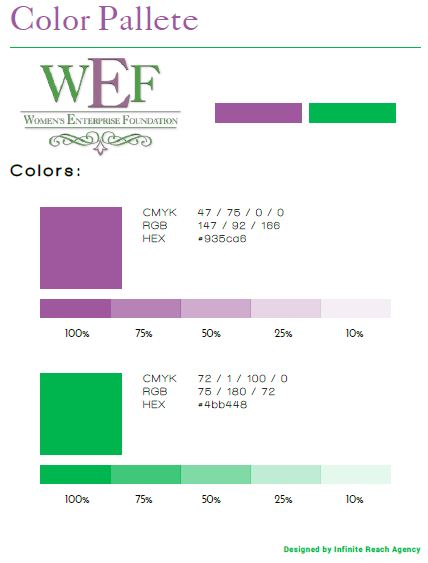What to Include in your Brand Guideline
At Infinite Reach we call these our Marketing Standards, they are our guide for not only our brand but for each of our clients brands as well. The goal of your Brand Guideline is to create a framework that anyone in your organization can follow. It creates a guide for your brand so that everything you push out has a consistent look and message.
We went over why brand consistency is so important in my May blog post, but just to give a recap, brand consistency is what helps build rapport and brand recognition amongst your target audience. This is what eventually creates that coveted brand loyalty that every company wants to achieve with their customers and clients.
In order to keep your brand consistency on track, you need to create a brand guideline. That’s why we created the following list of items to include in your guide.
Brand’s History, Key Values and Mission
The first step in creating your brand guideline is outlining your brand’s history, key values and mission. This is the framework for what’s to follow in your guide. It gives the person looking at your standards the background knowledge they need to understand why you chose the color palette you did, what your logo represents etc.
This first piece is not only important for your graphic design and marketing team to know, but each and every employee. So, it’s really explaining what your brand is all about in a way that’s important to everyone at your company. It also gives them the background knowledge they need to continue keeping your brand consistent.
Logo, Official Color Palette and Typography
Of course you need your logo, colors and fonts. These are going to be used the most throughout your branding and marketing efforts so it’s important people get it right. You have already established your brand history, values and mission, so you have the groundwork done. Now connect that to each of these elements.
Why did we choose this color palette? Are there times when we should use one color over another? When people know the why it tends to resonate more with them. They aren’t making all the headlines on the website purple just because, they understand the reasoning behind that.
Typography is one area that may seem unimportant, but it’s definitely imperative that everyone understands which fonts they should be using and when.
The logo, this is one if not the most important aspect of your branding. When you see just the Nike Swoosh do you know what brand it is? Of course, and that’s because they make sure to keep that logo consistent no matter what they are using it for. A lot of companies have multiple variations of their logo, so ensuring your team understands when to use which logo is important e to keeping your brand consistent.
Example of a Marketing Standard Page
Letterhead and Examples of Marketing Projects
You should be using company letterhead on anything you send out. It only helps your brand recognition. The only problem is making sure everyone is using the same letterhead, so it’s another important component to include in your brand guidelines.
Examples of past marketing projects are also important. They highlight the marketing standards you’ve already established. For example, when we post about our blogs on Instagram we have a set graphic format we use each time so it’s consistent. Eventually our followers may not even need to see the logo on the image to know that Infinite Reach posted a new blog. The examples help guide your team and give them a framework for their next project.
Example of our Instagram Blog Post Images
Brand consistency is very important and a brand guideline allows you to share what that brand is to your employees. It helps create a guide for anyone in your organization to use and keep them within the brand image you’ve already created for your clients or customers.








